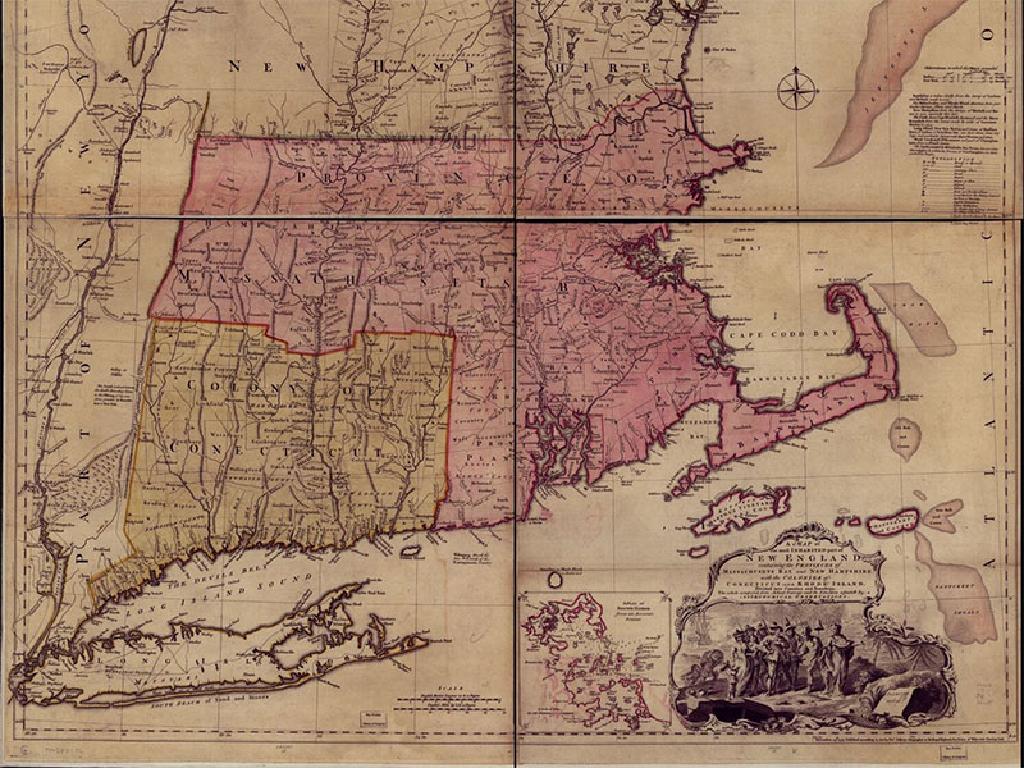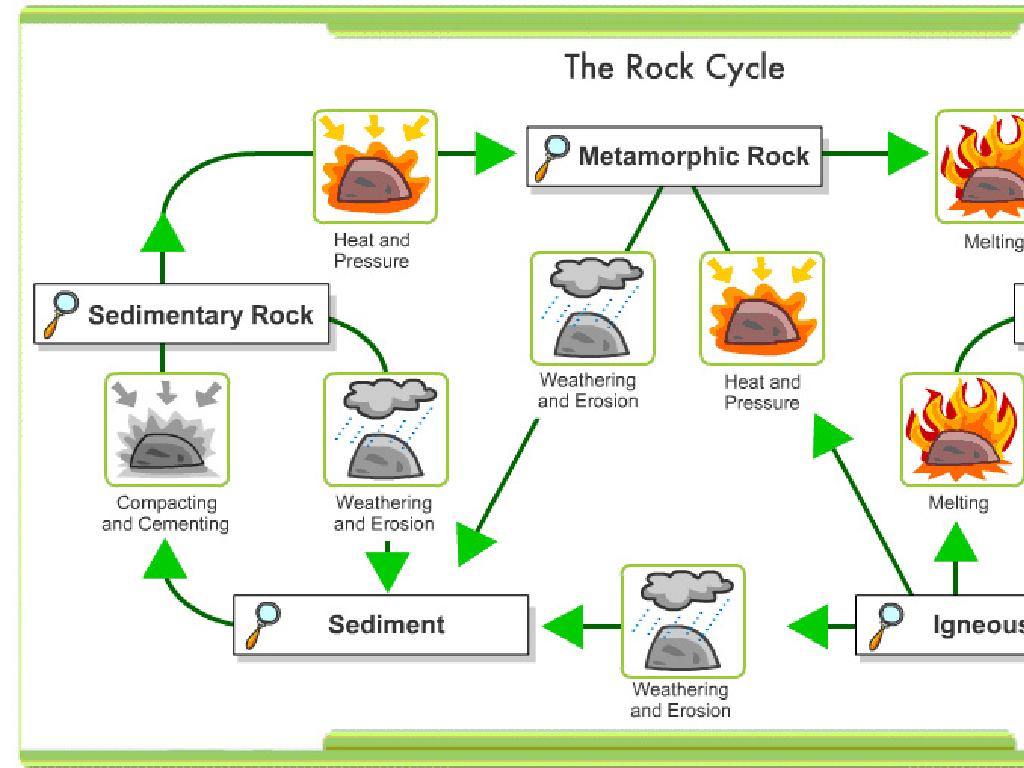Comparing The North And The South
Subject: Social studies
Grade: Eighth grade
Topic: The Antebellum Period
Please LOG IN to download the presentation. Access is available to registered users only.
View More Content
Welcome to the Antebellum Period
– Grasp the Antebellum Period
– A time before the Civil War, marked by distinct regional differences
– Define ‘Antebellum’
– ‘Antebellum’ refers to the period before a war, in this case, the American Civil War
– Compare the North and South
– We’ll explore economic, social, and cultural contrasts
– Anticipate today’s discoveries
|
This slide introduces students to the Antebellum Period, a critical time in American history leading up to the Civil War. It’s essential to provide a clear definition of ‘Antebellum’ and set the stage for a comparative analysis of the Northern and Southern states during this era. Emphasize the importance of understanding the period’s context to comprehend the causes and impacts of the Civil War. Today’s lesson will delve into the economic, social, and cultural differences between the two regions, which were pivotal in shaping the nation’s history. Encourage students to think critically about how these differences contributed to the tension and eventual conflict between the North and South.
Life in the Antebellum North
– Northern economy: Industry-led
– Factories and innovation drove economic growth.
– Social structure: Emergence of middle class
– A new middle class of workers and entrepreneurs arose.
– Urban life: Bustling cities
– Cities grew with immigration and diverse job opportunities.
– Cultural growth: Education and reforms
– Emphasis on education, religious revivals, and social reforms.
|
This slide aims to provide an overview of the Northern United States during the Antebellum period, focusing on the economy, social structure, and cultural aspects. The North’s economy was characterized by rapid industrialization and innovation, leading to significant urbanization. The rise of factories and the influx of immigrants contributed to the emergence of a distinct middle class. Urban life in the North was marked by the growth of cities, offering a variety of jobs and a bustling atmosphere. Culturally, the period saw a strong emphasis on education, with public school systems expanding. Religion played a significant role, with the Second Great Awakening spurring various reform movements, including abolitionism and temperance. Encourage students to compare these aspects with life in the Antebellum South in subsequent slides, highlighting the stark contrasts between the two regions.
Life in the Antebellum South
– Southern economy: Agriculture
– Relied heavily on agriculture and slave labor for economic prosperity.
– Social hierarchy: Class divisions
– Plantation aristocracy at the top, followed by yeomen farmers and the enslaved.
– Cultural values: Honor and family
– Society valued personal honor, strong familial ties, and traditional roles.
– Women’s roles in the South
– Women were expected to manage households and uphold social norms.
|
This slide aims to provide an overview of life in the Antebellum South, focusing on the economy, social structure, and cultural aspects. Emphasize the dependence of the Southern economy on agriculture, particularly cotton, and how this reliance was underpinned by the institution of slavery. Discuss the rigid social hierarchy, with a small, wealthy plantation aristocracy at the top and a large population of enslaved African Americans at the bottom. Highlight the cultural values of honor and family, which were central to Southern life, and how these values influenced the expected behavior of individuals. Lastly, delve into the role of women, who were often seen as the moral compasses of their families, responsible for domestic duties and maintaining social etiquette. Encourage students to consider how these factors shaped the identity and daily life of those living in the Antebellum South.
Economic Differences: North vs. South
– Industrial vs. Agricultural economies
– North: Industrial, factories; South: Agricultural, plantations
– Impact of resources and geography
– North: Abundant coal, rivers; South: Fertile land, warm climate
– Trade and commerce variations
– North: Diverse markets, South: Relied on cotton exports
– Infrastructure and internal improvements
– North: Extensive railroads, canals; South: Fewer investments in transport
|
This slide aims to highlight the stark economic differences between the North and South during the Antebellum period. Emphasize the North’s industrial economy, powered by factories and abundant natural resources like coal and waterways, which facilitated trade and commerce. Contrast this with the South’s agricultural economy, reliant on plantations and the cultivation of cash crops like cotton, which was less diverse and more dependent on slave labor. Discuss how geography influenced these economic paths and how the North invested heavily in infrastructure, such as railroads and canals, to support its economic activities, while the South lagged in these internal improvements. Encourage students to consider how these economic differences contributed to the tensions leading up to the Civil War.
Social and Cultural Contrasts: North vs. South
– Daily life: North vs. South
– Industrial North with urban life vs. Agricultural South with plantation life
– Education and literacy rates
– Higher literacy in the North due to public schools vs. South’s private education
– Religious beliefs
– Diverse religions in the North vs. Dominant Protestantism in the South
– Philosophical differences
– North’s focus on progress and change vs. South’s traditional values
|
This slide aims to highlight the stark contrasts between the Northern and Southern states during the Antebellum period. Emphasize the differences in daily life, with the North’s bustling cities and factories compared to the South’s rural plantations. Discuss the impact of education on literacy rates, noting the North’s public school system and the South’s preference for private tutors. Explore the variety of religious practices in the North, including the rise of religious movements, against the more uniform Protestant beliefs in the South. Lastly, delve into the philosophical ideologies, contrasting the North’s embrace of progress and innovation with the South’s adherence to tradition and the status quo. Encourage students to consider how these social and cultural differences contributed to the growing divide between the two regions.
Political Tensions: North vs. South
– States’ rights vs. federal authority
– Debate over who had more power: individual states or the federal government.
– Missouri Compromise impact
– Missouri Compromise admitted Missouri as a slave state and Maine as a free state, maintaining balance.
– Compromise of 1850 effects
– Addressed slavery and territorial issues, including stronger fugitive slave laws.
– Dred Scott decision’s fallout
– Ruled that African Americans were not citizens and had no rights, increasing tensions.
|
This slide delves into the escalating political tensions between the North and South during the Antebellum period. Highlight the fundamental conflict over states’ rights versus federal authority, which was a precursor to the Civil War. Discuss the Missouri Compromise and the Compromise of 1850, both of which were attempts to resolve the balance of power between slaveholding and non-slaveholding states. Emphasize the Dred Scott decision as a pivotal moment that invalidated the Missouri Compromise and exacerbated sectional tensions. Encourage students to consider how these political events contributed to the growing divide between the North and South, setting the stage for the Civil War. Provide examples of how these compromises and decisions were received differently in the North and South to illustrate the regional disparities.
The Road to Civil War: North vs. South
– Divergent Northern and Southern societies
– Industrial North vs. Agricultural South, differing economies and cultures
– Events escalating tension
– Missouri Compromise, Compromise of 1850, Kansas-Nebraska Act
– Antebellum period’s role
– Antebellum: time before the Civil War, setting the stage for conflict
– Prelude to conflict
|
This slide aims to outline the fundamental differences between the North and South that contributed to the Civil War. Emphasize the contrast between the industrialized, urban North and the rural, plantation-based South. Highlight key legislative events that attempted to balance power but ultimately increased discord. Discuss the Antebellum period as a critical time of mounting tensions and sectionalism, which laid the groundwork for the war. Encourage students to consider how these historical elements are interconnected and led to the inevitable clash between the two regions.
Role-Play Debate: North vs. South
– Divide into North and South groups
– Prepare arguments on key issues
– Focus on states’ rights, slavery, tariffs
– Engage in a structured debate
– Reflect on historical perspectives
– Consider how people in history saw these issues differently
|
This class activity is designed to help students actively engage with the historical content by taking on the roles of the North and South during the Antebellum period. Divide the class into two groups and assign them to represent either the North or the South. Each group will research and prepare arguments on states’ rights, slavery, and tariffs. During the debate, encourage students to use historical facts and perspectives to support their arguments. Conclude the activity with a reflection session, prompting students to discuss how historical perspectives can differ based on regional, economic, and cultural factors. This will help them understand the complexity of historical events and the importance of considering multiple viewpoints. Possible activities for different students could include acting as mediators, timekeepers, or fact-checkers during the debate.





